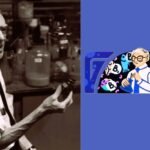Introduction
Creating a blockbuster film is a meticulous and collaborative process that spans multiple stages, each essential to the success of the final cinematic masterpiece. From the initial spark of an idea to the grand premiere, filmmakers navigate through scriptwriting, pre-production, production, post-production, and beyond. This article offers a comprehensive exploration of the intricate journey involved in crafting blockbuster films.
The Genesis – Ideation and Scriptwriting
1. Ideation and Conceptualization
1.1. Spark of Inspiration
The journey of a blockbuster begins with a spark of inspiration. Whether it’s a unique concept, an intriguing character, or a captivating theme, this initial idea serves as the foundation for the entire film.
1.2. Collaborative Brainstorming
The ideation phase involves collaborative watch Polish TV in the UK brainstorming sessions among writers, directors, and producers. It’s a melting pot of creativity where diverse perspectives converge to refine the initial concept into a solid narrative.
2. Script Development
2.1. Crafting the Screenplay
Once the concept is solidified, writers embark on the task of crafting the screenplay. This document serves as the blueprint of the movie, outlining dialogue, scenes, and character arcs. The quality of the script is paramount, setting the tone for the entire production.
2.2. Iterative Process
Script development is often an iterative process. Writers collaborate with the creative team, incorporating feedback, making revisions, and fine-tuning the narrative until it reaches a point where it resonates with the vision of the director and the producers.
Pre-Production – Laying the Foundation
3. Pre-Visualization and Storyboarding
3.1. Visualizing the Narrative
Pre-visualization techniques, including storyboards, animatics, and concept art, help filmmakers visualize key scenes. This process aids in determining camera angles, shot compositions, and overall visual aesthetics, providing a tangible reference for the entire team.
3.2. Storyboarding
Storyboard artists create a series of illustrated frames that represent each shot in the script. These storyboards serve as a visual guide, helping the director and cinematographer plan the sequence of shots and transitions, ensuring a cohesive visual narrative.
4. Casting and Rehearsals
4.1. The Casting Process
Casting directors play a crucial role in selecting actors who not only fit the characters but also bring depth to the roles. The casting process involves auditions, chemistry tests, and collaborative decision-making to assemble the ideal cast.
4.2. Rehearsals
Before cameras start rolling, actors engage in rehearsals to refine their performances and build chemistry. This collaborative process allows the cast to understand their characters, the director’s vision, and the overall dynamics of the film.
5. Set Design and Construction
5.1. Creating Authentic Environments
Production designers, art directors, and set decorators collaborate to bring the script’s settings to life. Whether it involves building intricate practical sets or scouting real locations, the goal is to create visually stunning and authentic environments that enhance the storytelling.
6. Cinematography
6.1. Visualizing the Film
The director of photography (DP) collaborates closely with the director to capture the visual essence of the film. Decisions about lighting, camera movements, and framing are made to convey the mood and tone intended for each scene. Cinematography plays a pivotal role in shaping the visual identity of a blockbuster.
6.2. Special Effects and CGI
In the age of technological advancements, special effects and computer-generated imagery (CGI) play a crucial role in creating the spectacular visuals audiences expect from blockbusters. From explosive action sequences to fantastical creatures, the seamless integration of CGI enhances the cinematic experience.
Production – Bringing the Vision to Life
7. Principal Photography
Principal photography marks the phase where the cameras start rolling, and scenes come to life. The director, cinematographer, and entire crew work in unison to capture the planned sequences, ensuring that the visual elements align with the director’s vision.
7.2. On-Set Challenges
The production phase isn’t without challenges. Weather conditions, technical issues, and unforeseen obstacles require the crew to adapt and problem-solve on the spot, showcasing the resilience and creativity required in filmmaking.
8. Sound Design and Music
8.1. Crafting the Auditory Landscape
Sound designers and editors meticulously craft the auditory landscape of the movie. Every footstep, creak, and explosion is carefully selected or created to enhance the immersive experience. Foley artists often recreate sounds in a studio to achieve authenticity.
8.2. Original Score
Composers create original musical scores that complement the emotions and atmosphere of each scene. The score becomes an integral part of the film, heightening tension, evoking emotions, and creating a memorable auditory experience.
9. Visual Effects (VFX)
9.1. Post-Production Integration
During post-production, visual effects artists work on integrating CGI seamlessly into live-action footage. This intricate process involves compositing, rendering, and refining each visual effect to ensure it aligns with the director’s vision.
H2: 10. Film Editing
10.1. Shaping the Narrative
Film editors play a crucial role in shaping the narrative during post-production. They sift through hours of footage to assemble the rough cut, fine-tune the pacing, and create a cohesive visual story. The editing process is iterative, involving collaboration with the director.
10.2. Sound Editing and Mixing
Simultaneously, sound editors work on perfecting the auditory elements. The final mix ensures that the dialogue, music, and sound effects come together harmoniously, delivering an immersive audio experience.
Marketing and Release – Unveiling the Spectacle
11. Marketing Campaigns
11.1. Building Anticipation
Effective marketing campaigns are essential to generate anticipation and buzz. Teasers, trailers, and promotional events are strategically crafted to capture the audience’s attention and build excitement leading up to the film’s release.
11.2. Merchandising and Tie-Ins
Blockbusters often extend their reach beyond the screen through merchandising. Action figures, clothing lines, and other tie-in products capitalize on the popularity of the film, creating additional revenue streams and fostering a deeper connection with fans.
12. Global Premiere and Release
12.1. Showcasing the Spectacle
Many blockbusters choose to premiere at prestigious film festivals to generate critical acclaim and build momentum for their theatrical release. Red carpet premieres become major events, attended by cast, crew, and enthusiastic fans.
12.2. Worldwide Theatrical Release
Blockbusters aim for a wide and simultaneous release across multiple markets. This global strategy maximizes the film’s box office potential and ensures that audiences around the world experience the spectacle at the same time.
13. Budgetary Considerations
13.1. Financial Investment
The production of a blockbuster often comes with a significant financial investment. From A-list cast salaries to cutting-edge special effects, the budget can skyrocket. However, the potential for massive returns at the box office makes the high stakes worthwhile for studios.
14. Creative Collaboration
The collaborative nature of filmmaking requires a delicate balance between the director’s artistic vision and the contributions of various creative professionals. Navigating differing opinions and maintaining a cohesive vision can be a challenging but ultimately rewarding process.
15. Meeting Audience Expectations
15.1. The Weight of Anticipation
Blockbusters often carry the weight of heightened audience expectations. Meeting or surpassing these expectations is a delicate dance, as filmmakers strive to deliver a film that not only satisfies existing fans but also attracts new audiences.
Legacy and Impact – Beyond the Box Office
16. Cultural Impact
16.1. Shaping Pop Culture
Blockbusters have the power to transcend the realm of cinema and become cultural phenomena. Iconic characters, memorable quotes, and groundbreaking visual effects contribute to the lasting impact these films have on popular culture.
17. Awards and Recognition
17.1. Pursuit of Excellence
While box office success is a significant indicator of a blockbuster’s impact, many aspire to achieve critical acclaim and recognition at prestigious award ceremonies. Winning or even being nominated for awards adds a layer of prestige to the film’s legacy.
Conclusion
The creation of blockbuster films is an intricate and collaborative journey that involves creativity, resilience, and meticulous attention to detail. From the initial ideation to the worldwide premiere, each stage contributes to the overall spectacle that captivates audiences globally. As filmmakers continue to push the boundaries of storytelling and visual effects, the legacy of blockbuster films will endure, shaping the cinematic landscape for generations to come.










